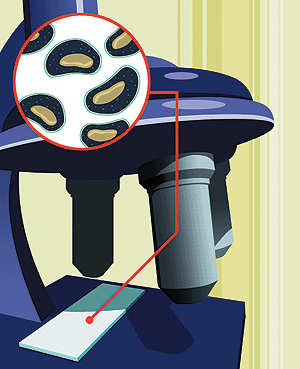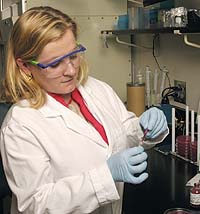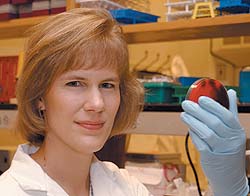|
The trend was identified by Project ICARE (Intensive Care Antimicrobial Resistance Epidemiology), a joint project between the Division of Health Quality Promotion at the CDC and the Rollins School of Public Health (RSPH). For nine years, Project ICARE has pursued a large mandate: to reduce the emergence and spread of resistant superbugs that are threatening to diminish the medical advances of the last century. Antibiotic resistance is a serious problem globally and in the United States. The CDC, for example, estimates that more than one-third of the 150 million prescriptions written for antibiotics each year are unnecessary. In hospitals, antibiotic resistance is of particular concern. Each year nearly 2 million patients in the United States get an infection while in a hospital, and 90,000 of those die as a result. More than 70% of bacteria that cause hospital-acquired infections are resistant to at least one of the drugs commonly used to treat them. Project ICARE links epidemiology with laboratory study, collecting and investigating emerging resistant bacteria from clinical laboratories. To date, more than 60 laboratories have participated in the study by forwarding samples. The laboratory component is critical for Project ICARE because new patterns of resistance develop quickly, especially in hospital intensive care units. Investigators need to know quickly the specifics of these occurrences to develop strategies and drugs for control and treatment. ICARE represents a strong collaboration between the CDC and Emory. The laboratory techniques for molecular typing, some of which were developed at CDC, form the basis of ICARE investigation. Nine RSPH students have trained in the ICARE labs, and six of those have gone on to work at CDC in full-time or contractor positions. The ICARE staff work closely with CDC colleagues and co-author research papers. Close to 100 publications and abstracts for national and international meetings have resulted from ICARE data. Current RSPH staff includes John McGowan (principal investigator and professor of epidemiology), a doctoral student, a medical technologist, two MPH students, a part-time researcher, and arriving this fall, the project’s first postdoctoral student.
One of the most important outcomes of Project ICARE so far is CDC’s launching of the Antibiotic Use and Resistance (AUR) Surveillance System. Based on the ICARE model, AUR monitors antibiotic resistance in hospitals throughout the United States.
Squashing emerging superbugs However, with the emergence of superbugs with multiple resistance, ICARE investigators have honed in on two main questions: Are bacterial organisms changing in a way that presents a clinical and public health problem of antibiotic resistance? If so, are the newly emerging resistant bacteria a potential problem for public health and clinical laboratories to recognize?
The latest phase of the study expands testing to include an international component. Eight laboratories in Brazil are now participating in ICARE, providing more unusual and resistant bugs to study. “There is so much information to be gleaned from these fresh samples that we almost have data overload,” McGowan says. Although still a rare occurrence, several drug resistant bacteria similar to those identified in Brazil have appeared in North American hospitals—a trend that is likely to increase, McGowan predicts.
Creating the gold standard
She recently returned to RSPH to teach in the ICARE laboratories and to design an educational outreach program for participating hospitals and the public. In July, she and one of the MPH students she mentored were among the authors of a paper on how to optimize computer software to get the best analysis of pulsed-field gel electrophoresis, a topic that illustrates one important lesson that Steward learned at the CDC. We are the ones in the forefront, she says. We are the ones who are creating the gold standard. By Rhonda Mullen
G-Training in Progress | Foege Fellows | Cancer Collaboration | Profile: County Connections Class Notes & Alumni News | Rollins School of Public Health
Copyright © Emory University, 2003. All Rights
Reserved. |



